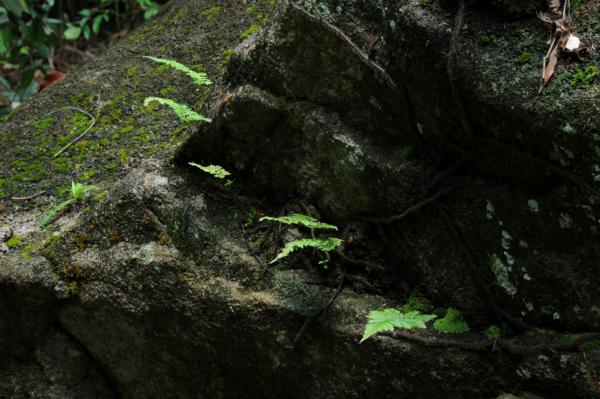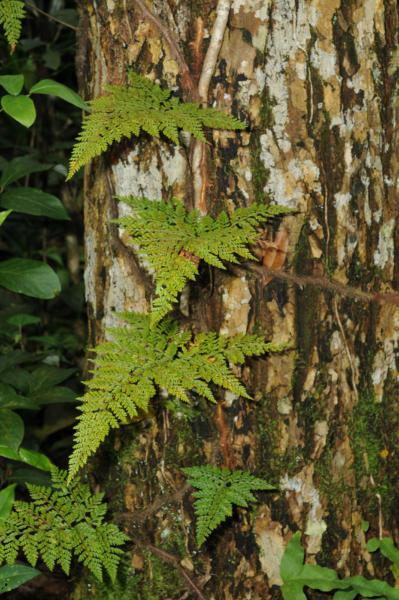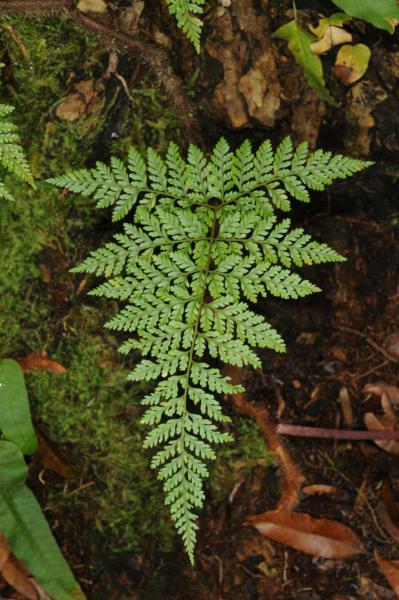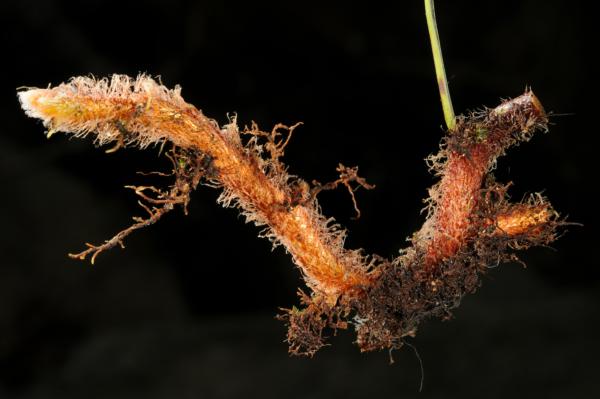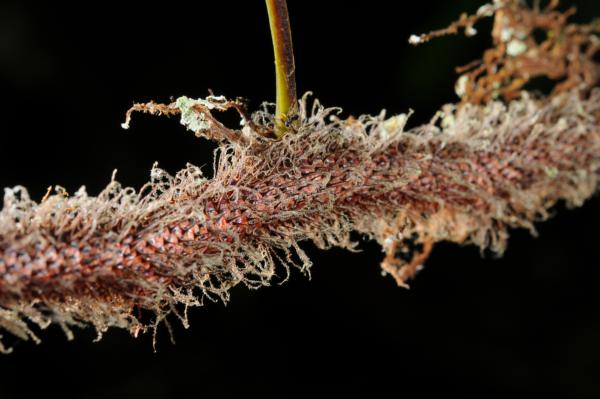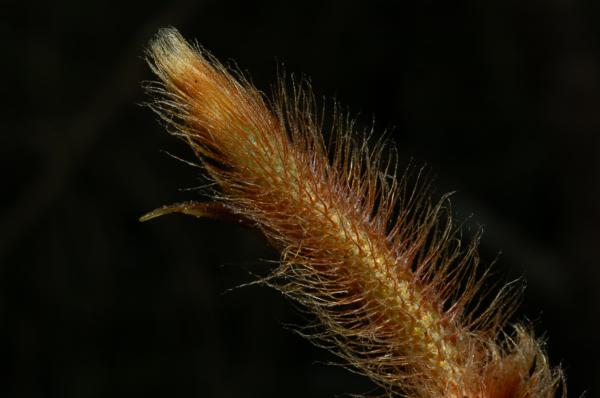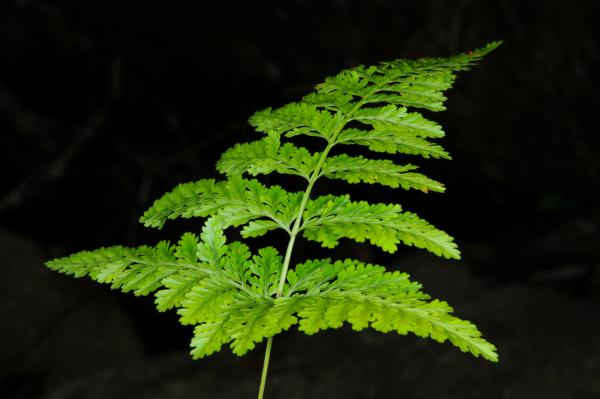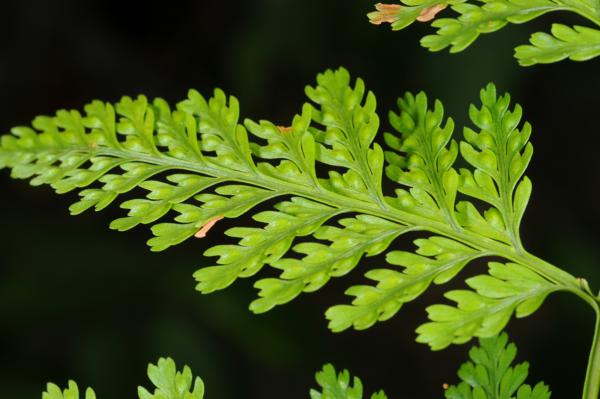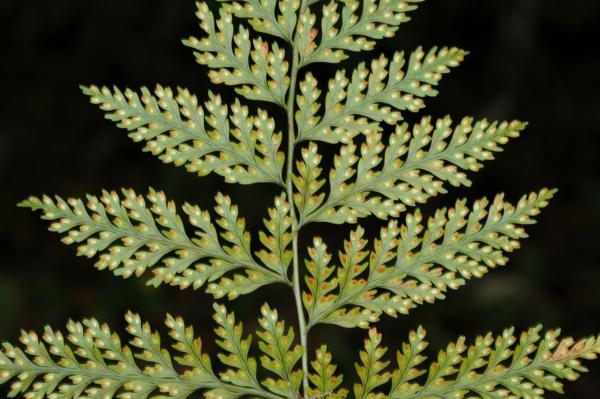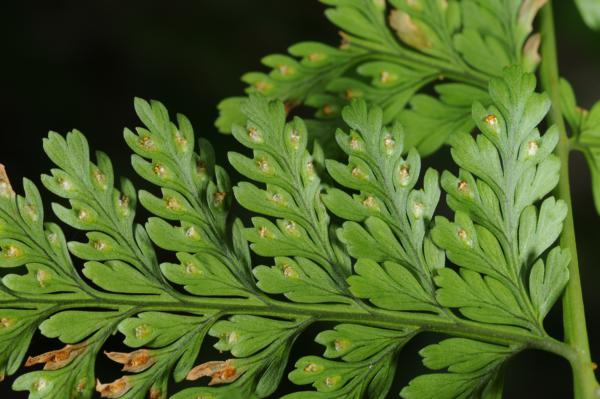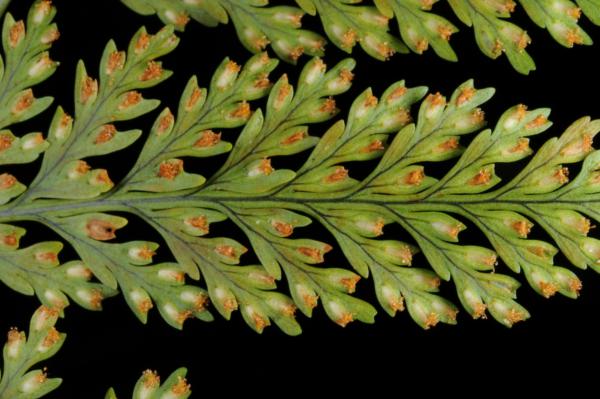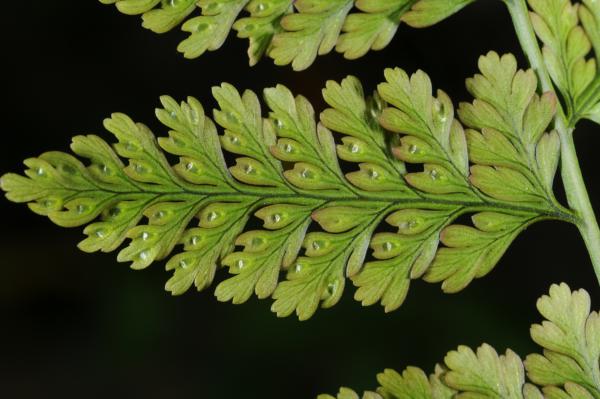
Davallia trichomanoides Blume var. lorrainii (Hance) Holttum
Family
Davalliaceae
Nomenclature
Davallia trichomanoides Blume var. lorrainii (Hance) Holttum, Rev. Fl. Malaya ed. 1, 2: 361. 1955 [‘1954’]; Holttum, Dansk Bot. Ark. 23: 234. 1965; Seidenf., Nat. Hist. Bull. Siam Soc. 19: 86. 1958; Tagawa & K.Iwats., Fl. Thailand 3: 163. 1985; Nooteboom, Fl. Males., Ser. II, Ferns and Fern Allies 3: 265. 1998; Boonkerd & Pollawatn, Pterid. Thailand: 234. 2000. – Davallia lorrainii Hance, Ann. Sci. Nat. 5: 254. 1866; Bedd., Handb. Ferns Brit. India: 61. 1883; Tardieu & C.Chr., Fl. Indo-Chine 7(2): 106. 1939. – Type: Lorrain 1732 (BM), Peninsular Malaysia, Penang.
Description
Rhizome long creeping, 3–5 mm diam., densely scaly throughout; scales various as noted in the key to the varieties. Stipes stramineous, about 10 cm long. Laminae deltoid or roundly pentagonous, gradually narrowed from base to apex, about 18 cm long and wide, or up to 35 cm long, tripinnate to quadripinnatifid; all pinnae anadromous; basal pinnae the largest, gradually narrowed from base to acute apex, normally 10 by 6 cm, shortly stalked; upper pinnae gradually smaller upwards; pinnules subsessile or larger ones very shortly stalked, moderately acute to acute at apex, cuneate at base; secondary pinnules sessile, round to moderately acute at apex, cuneate at base, lobed at margin; lobes acute at apex, subcoriaceous, glabrescent, green, paler beneath; veins pinnate, hardly distinct. Sori terminal on veinlets; indusia cup-shaped, up to 2 mm long, 0.7 mm diam.
There are two distinct varieties which are sometimes treated as species. As noted by Holttum (1955 [‘1954’]), the rhizome scales of var. trichomanoides are somewhat variable in colour and hairiness, though those of var. lorrainii are stable and discriminative by themselves.
Key to the varieties in Thailand
1. Scales gradually narrowing from peltate base to acuminate apex, bright brown, entire and nearly glabrous to short-hairy at margin. Ultimate segments lobed more than half-way towards midribs. a. var. trichomanoides1. Scales abruptly narrowing above the base to form long tails, dark except for those on young rhizome, with long paler hairs at margin; hairs longer than the breadth of scales, ultimate segments very shallowly lobed . b. var. lorrainii
Distribution in Thailand
NORTHERN: Chiang Mai, Chiang Rai, Lamphun, Lampang, Tak, Phitsanulok; NORTH-EASTERN: Loei; EASTERN: Nakhon Ratchasima; SOUTH-WESTERN: Kanchanaburi; CENTRAL: Nakhon Nayok; SOUTH-EASTERN: Chon Buri, Rayong, Chanthaburi, Trat; PENINSULAR: Surat Thani, Nakhon Si Thammarat.
Distribution in Cambodia
Kampot, Koh Kong, Kompong Speu, Mondulkiri.
Wider Distribution
Central Burma, Indochina and throughout Malesia.
Ecology
Ecology.– On mossy rocks or bases of tree trunks in light shade to dense evergreen forests at 800–1400 m alt.
Proposed IUCN Conservation Assessment
Least Concern (LC). This variety is widespread and not under any known threat.
Voucher specimens - Thailand
Middleton et al. 5068, Phitsanulok, Phu Hin Rong Kla National Park (E).
Voucher specimens - Cambodia
Long et al. CL113, Kampot, Bokor National Park (P); Poilane 380, Kampot, Mts Elephant (P); Viboth R5-42, Koh Kong, Thma Baing (P); Pierre 5775, Kompong Speu (P); Long et al. CL425 & CL477, Mondulkiri (P).
Habit on rocks
Habit on tree
Habit
Rhizome
Rhizome scales
Growing tip of rhizome
Basal pinnae
Upper surface of lamina
Lower surface of lamina
Lower surface of lamina with sori
Sori
Young sori
Site hosted by the Royal Botanic Garden Edinburgh. Content managed by Stuart Lindsay, Gardens by the Bay, Singapore and David Middleton, Singapore Botanic Gardens. Last updated 24 January 2012
